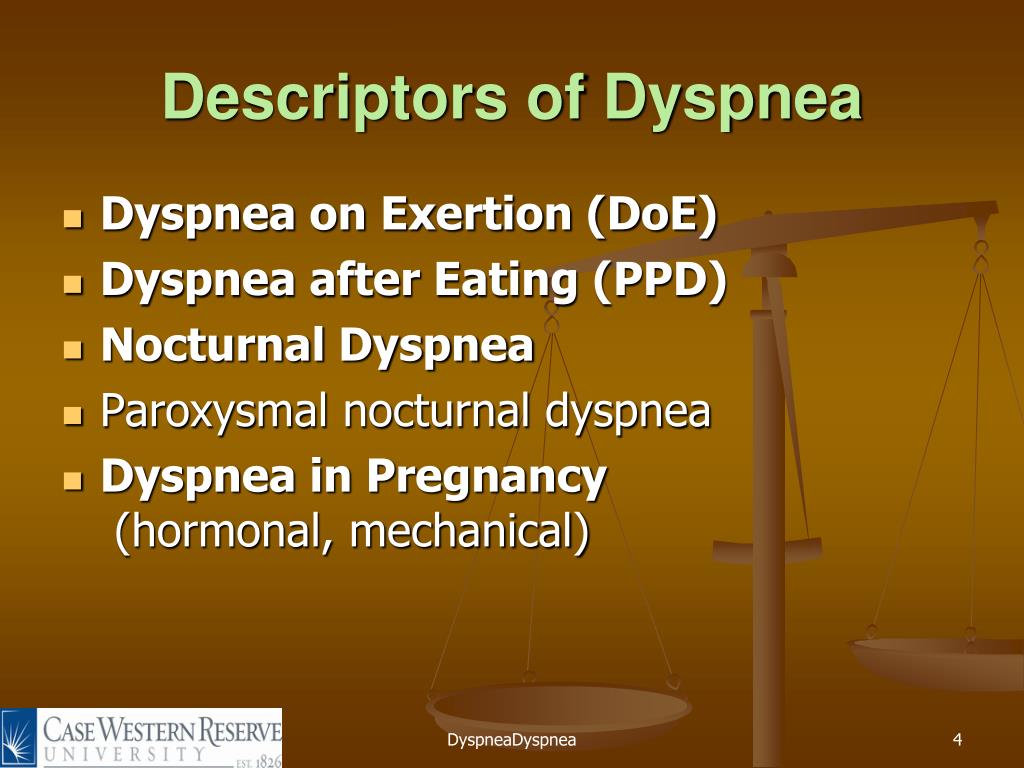
Although two previous studies have investigated the threshold at which dyspnea is a determinant of all-cause mortality, those were not controlled for lung function level, an important long-term predictor of mortality. However, little is known about the association between severity of dyspnea and all-cause mortality. Several studies have established associations between dyspnea and all-cause and cardiovascular mortality. Furthermore, dyspnea is a better predictor of 5-year survival than airway obstruction in patients with COPD. A positive response to a simple question about effort-related dyspnea can predict subsequent mortality, independently of other risk factors. The MRC is an excellent instrument for categorizing patients according to the severity of their dyspnea. One of the tools to quantify the intensity of dyspnea on exertion is the self-reported Medical Research Council (MRC) questionnaire, with a scale developed by Fletcher and coworkers. Therefore dyspnea is of public health importance and needs more attention, especially since this symptom is easily recognized and detected. 24 %) and associated with poor health outcome in people with no apparent pre-existing disease. Dyspnea on exertion is a common symptom not only in patients with lung and heart diseases, but it is also fairly prevalent (i.e. Having or developing dyspnea is a risk factor for mortality.ĭyspnea is a subjective experience of breathing discomfort that consists of qualitatively distinct sensations that vary in intensity. Furthermore this study is the first showing that dyspnea remission normalizes mortality risk. These results show that dyspnea is associated with mortality in a severity-dependent manner.

Additionally, dyspnea effects on mortality were more pronounced in overweight/obese and older subjects and in subjects with better lung function. Persistent dyspnea and dyspnea development were risk factors for all-cause, cardiovascular and COPD mortality. Subjects who lost dyspnea had hazard ratios for all-cause and cause-specific mortality comparable to asymptomatics. Severe dyspnea was significantly associated with COPD mortality. Subjects with moderate and severe dyspnea had increased all-cause and cardiovascular mortality compared to asymptomatics. After 43 years of follow-up, 2,883 (39 %) of 7,360 subjects examined for dyspnea severity had died, 1,386 (19 %) due to cardiovascular disease, 267 (4 %) due to chronic obstructive pulmonary disease (COPD).

Associations between mortality and dyspnea severity and changes in dyspnea status were investigated using Cox regression adjusted for gender, age, FEV 1 %predicted, place of residence, smoking and BMI. Vital status of all 8,465 subjects on December 31st, 2008 was assessed. The Vlagtwedde/Vlaardingen study started in 1965 and subjects were re-examined every 3 years until 1989/1990. The effects of dyspnea severity and changes in dyspnea status on all-cause and cause-specific mortality remain unclear.


 0 kommentar(er)
0 kommentar(er)
